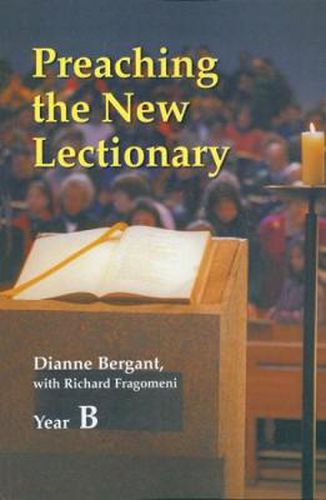Readings Newsletter
Become a Readings Member to make your shopping experience even easier.
Sign in or sign up for free!
You’re not far away from qualifying for FREE standard shipping within Australia
You’ve qualified for FREE standard shipping within Australia
The cart is loading…






This title is printed to order. This book may have been self-published. If so, we cannot guarantee the quality of the content. In the main most books will have gone through the editing process however some may not. We therefore suggest that you be aware of this before ordering this book. If in doubt check either the author or publisher’s details as we are unable to accept any returns unless they are faulty. Please contact us if you have any questions.
The Lectionary is made up of selected passages from the Bible, placed within a literary and liturgical context. This new context calls for a consideration of the liturgical character and setting of the Lectionary readings. Preaching the New Lectionary offers readers that interpretation. Fundamentally a literary reading of the texts, this commentary also provides historical information whenever something in the text appears foreign to the contemporary believer. Preaching the New Lectionary is unique. First, it employs a literary-liturgical way of interpreting all the readings of each Sunday and major feast of the liturgical year, including the often overlooked responsorial psalm. Second, it explicitly situates the interpretation of each day within the theology of its respective liturgical season. This theology is drawn from the specific themes of the readings that comprise that particular year rather than from more general themes associated with the season. The meaning of the entire season becomes the context for understanding the individual parts of it. Third, the lections are also read in sequential order from the first Sunday of that season to the last. This reading interprets the function of the literary forms, thus providing yet another way of interpreting the riches of the readings. This way of reading and understanding the Lectionary has potential for many forms of liturgical ministry. It can quicken the religious imagination of homilists, thus providing fresh new possibilities for liturgical preaching. It offers creative insights for those involved in the liturgical preparation for the celebration of feasts and seasons. It can also act as a valuable resource for liturgical catechesis. The material in Preaching the New Lectionary contributes toward enhancing the liturgical lives of the faithful.
$9.00 standard shipping within Australia
FREE standard shipping within Australia for orders over $100.00
Express & International shipping calculated at checkout
This title is printed to order. This book may have been self-published. If so, we cannot guarantee the quality of the content. In the main most books will have gone through the editing process however some may not. We therefore suggest that you be aware of this before ordering this book. If in doubt check either the author or publisher’s details as we are unable to accept any returns unless they are faulty. Please contact us if you have any questions.
The Lectionary is made up of selected passages from the Bible, placed within a literary and liturgical context. This new context calls for a consideration of the liturgical character and setting of the Lectionary readings. Preaching the New Lectionary offers readers that interpretation. Fundamentally a literary reading of the texts, this commentary also provides historical information whenever something in the text appears foreign to the contemporary believer. Preaching the New Lectionary is unique. First, it employs a literary-liturgical way of interpreting all the readings of each Sunday and major feast of the liturgical year, including the often overlooked responsorial psalm. Second, it explicitly situates the interpretation of each day within the theology of its respective liturgical season. This theology is drawn from the specific themes of the readings that comprise that particular year rather than from more general themes associated with the season. The meaning of the entire season becomes the context for understanding the individual parts of it. Third, the lections are also read in sequential order from the first Sunday of that season to the last. This reading interprets the function of the literary forms, thus providing yet another way of interpreting the riches of the readings. This way of reading and understanding the Lectionary has potential for many forms of liturgical ministry. It can quicken the religious imagination of homilists, thus providing fresh new possibilities for liturgical preaching. It offers creative insights for those involved in the liturgical preparation for the celebration of feasts and seasons. It can also act as a valuable resource for liturgical catechesis. The material in Preaching the New Lectionary contributes toward enhancing the liturgical lives of the faithful.